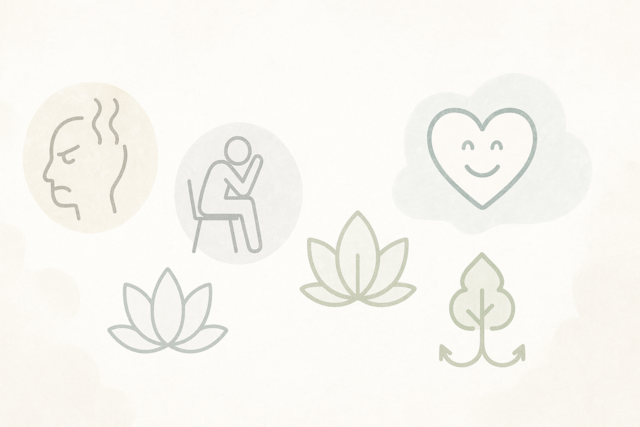There are several classifications that drugs can fall into. These categories usually determine how the drug works, its origin, the effects it has on the user, and the forms it takes. The legality of a drug is determined by factors such as its risk of dependency and potential for abuse. As a result, it is entirely possible for two drugs to fall into the same category but be scheduled differently.
This article will specifically look at drugs that are considered Narcotics. While most of the narcotics that will be discussed are illegal to use, there are many legal narcotics that can be abused. The signs of abuse, side effects, and what a person may expect in recovery will be discussed for both legal and illegal narcotics.
What Are Narcotics?
The term "narcotics" is often used when referring to all illegal drugs, but when it comes classification narcotics are specifically opioids. When taken, narcotics affect the pain and pleasure receptors in the brain and can dull a person's senses. In the medical community; most narcotics are used as pain relievers. As a result, many instances of prescription drug abuse involve narcotics.
Narcotics are one of the largest drug groups and has more substance abuse issues than any other type. Currently, there is an opioid epidemic in the United States that includes the abuse of prescription opioids and heroin. Data from the Centers for Disease Control and Prevention (CDC) showed that over 33,000 people died as a result of the epidemic in 2015. That's about 91 people per day! The number of overdose deaths from opioids has steadily increased since 1999, a trend that is unfortunately expected to continue as the data for 2016 is released.
Natural narcotics have their origins with the poppy papaver somniferum plant and have a long history of being abused. Opium was used recreationally for centuries and became a major trade good for Europeans starting in the 1600s, which resulted in it being one of the biggest smuggled goods when it was banned. Opium-derivatives like morphine were legal, leading to their substitution for opium addicts. Many modern narcotics were synthesized in attempts to create a less-addictive version. Many narcotics used today, especially those for the medical field, are synthetic in origin but still have the potency of natural opiates.
Many substance abuse instances involving narcotics begin through the good intentions of a prescription. Narcotic pain relievers are one of the most common prescriptions that doctors write, and they are typically safe when used as intended. Their usage turns towards abuse when patients take more than the prescribed dosage, through a method different than prescribed, or by someone other than who it was prescribed to. It is also considered abuse when a person uses their prescription when it is no longer needed, such as after an injury has healed. Teens and adolescents who abuse prescription narcotics--276,000 in 2015--often are using stolen prescriptions belonging to their parents and relatives, or from the relatives of their peers.
Appearances and Usage
Thanks to its long history, there are many opiate-based narcotics currently in use. The similarities shared between all of the different kinds means that there is a limited variety in how they are typically used. Often, they can be smoked, swallowed, sniffed/snorted, or injected into the bloodstream depending on the form they take.
Most medical narcotics are found in a tablet or pill form, designed for patient's easy usage, and can be swallowed. They can also be ground-up into a powder and sniffed. Medical-grade narcotics also can come in a liquid form, usually for injections--think morphine. Some prescription narcotics, like fentanyl, come in the form of an adhesive patch that is applied to the skin for a certain amount of time. Fentanyl has developed some popularity in recent years, as it is significantly stronger than other medical opioids and is frequently prescribed for patients dealing with pain from surgery or cancer, and for patients who have developed a tolerance for other prescription pain relievers. In some cases, non-pharmaceutical fentanyl has been added to heroin to generate a stronger high.
The typical form that most people expect narcotics to come in is a powdered or chunk form. When in the powdered or chunk form, the color of the narcotic can range from white to brown. Some variations are black, and may even look like bits of coal or dirt. In this format, the drug can be smoked or snorted. Illegal narcotics like heroin usually are sold in this format, which users later convert into a syrup-like liquid for injection. The liquid form can also be taken orally, either by itself or mixed with food and drink.
Signs of Usage
Identifying a user of narcotics can be difficult if you're not paying attention. As stated before, the stereotype of what a drug addict looks like is inaccurate and doesn't work as an identifier. Many people who are addicted to drugs will work to keep their usage a secret, partially out of shame and guilt about what they are doing, and partially to ensure that they are able to continue using.
-
Physical signs--Abuse of narcotics usually presents itself though a person's appearance. It is not uncommon for a person to exhibit changes in their breathing, drowsiness or loss of consciousness, euphoria, confusion, or constricted pupils. A user may also exhibit dry mouth--they might increase their water intake in an attempt to alleviate it--and flushed skin. Some narcotics users have experience heavy extremities, which may present to others as difficulty moving or a slow reaction time. Users who abuse hydromorphone, a prescription narcotic, can also experience a loss of appetite and vomiting in addition to the symptoms listed above. Opiates also are known to cause constipation, which may be a symptom that a narcotics user exhibits. However, unless you are close with the person (spouse, partner, roommate, etc.) you suspect is abusing narcotics, then it isn't a symptom that you should investigate or inquire about.
-
Behavioral signs--Many narcotics users will act noticeably different due to their addiction. Sudden or dramatic mood swings are common, as is social withdrawal--distancing themselves from their peers, a decrease in participation, and possibly isolating themselves. Individuals who are abusing prescription narcotics may practice "doctor shopping," where they seek out medication from multiple doctors. They may also "lose" their prescription regularly in order to obtain more of it. As addiction isn't cheap, a person abusing narcotics may be experiencing financial problems; instances of theft are not uncommon, as the stolen items can be traded for drugs or for cash to pay for the drugs. Keep in mind that changes in a person's behavior can also be a sign that something else is going on in their life; look for other signs first before jumping to conclusions.
-
Drug-specific signs--Depending on what drug a person is using and the form it takes, there could be additional signs signaling narcotic abuse. Users who snort or sniff narcotics may have persistently runny noses, nosebleeds, or red irritation around their nose. Tract and needle marks, plus bruising around the injection site are common for users who inject intravenously. A user may hide their arms with long sleeves--which may be a part of their work uniform--or they may not be injecting on their arms; injecting between the toes and along joints are common alternatives, but can often generate instances of bacterial infections and gangrene. Narcotics users who smoke their drug of choice may exhibit similar symptoms experienced by tobacco smokers, such as coughing and yellowing teeth.
Many people who have substance abuse issues tend to take frequent breaks to use, usually passing them off as bathroom breaks or just outright disappearing for a few minutes. However, in the workplace, a person may be forced to take longer gaps in between usage than they would at home. This means it is possible that a narcotics user could go through the beginning stages of withdrawal, which could act as another sign of substance abuse. Withdrawal symptoms can appear similar to what you'd expect with the flu: headaches, sweating, nausea, and fatigue. Some signs of usage listed above may worsen, like mood swings, if they are starting to feel the effects of withdrawal.
The Side Effects
Narcotic usage is going to generate effects that last longer than the drug itself. The symptoms listed in this article are typically the initial effects a user can experience, as they occur when the drug is taken and dissipate when it leaves their system. Residual effects can occur from narcotic usage regardless of the type of narcotic, the dosage, or the duration that the person used it. Side effects are usually divided into short term and long term.
-
Short Term Effects--Many short-term effects present themselves once a person has stopped using and withdrawal has completed, although this is not always the case. They usually fade away a few days after the person's final use and may mix with or be clouded by residual symptoms from withdrawal. Common short-term side effects of narcotic abuse may can include lethargy, drowsiness, nausea, and continued changes in respiratory function. As narcotics are designed to function as pain relievers, users tend to become aware of aches and pains, which may stick around for several days. They may also be more sensitive towards pain, no matter how minor it is.
-
Long Term Effects--The most significant long-term effect of any substance abuse is dependence and the chemical changes in the brain and body that trigger it. This is no different for narcotics users. Narcotics users will most certainly develop a tolerance to their drug of choice the longer they use, which means they will need to steadily increase their dosage in order to feel any of the drug's effects. This will affect them long after they stop using, as any medication they are prescribed later in life may need to be at a higher dosage in order to work. Significant long-term effects for narcotics usage include damage to organs like the liver, permanent brain damage, abdominal bloating and distention, and persistent nausea. Intravenous users also face long-term heart and circulatory issues, including pulmonary embolisms. Collapsed veins and blood infections--which can be fatal--are also common for users who inject narcotics.
There are also side effects that come not from the drug itself, but from the actions a person takes while under its influence. Many users lack self-control when under the influence, so it is not unusual for them to do something that has serious consequences. Users may lose their driver's license, their homes, and cars, and damage their relationships with the people in their lives. They may contract diseases like HIV and hepatitis through needle use. It is also entirely possible that they may die from their usage, as the high dosages that many narcotics abusers take frequently result in overdoses.
Treatment and Recovery
A person's potential success in recovering from narcotics usually depends on how long they've been using, what they've been using and how, and the amount of damage that is already been done. Treatment and recovery is, understandably, going to take longer if a person has been using for years and has done a lot of damage to their body. Again, it's not an impossible task, but it's not an easy one either.
When a person chooses to seek out treatment, they are usually assessed before and after withdrawal to determine a plan of action. This is so treatment providers can be better prepared and aware of what needs to be addressed, especially in instances where there is organ damage. Narcotics like heroin are frequently mixed or "cut" with other substances by manufacturers and distributors, usually to extend the amount of product available. Those substances are not always other drugs, but chemicals and household items that are similar in appearance and composition that do not interfere with the drug. As a result; a person may have side effects from unknown non-narcotic substances that can affect their treatment and recovery.
Some narcotic users have the option to include the use of maintenance medications in their treatment plan. Buprenorphine and methadone are medications that interact with the brain's opioid receptors in a similar manner as opioids, but with less effect. Dosages can be administered by treatment providers to help reduce withdrawal symptoms--which may be necessary for some--and curb cravings. However, there is the potential for abuse with both medications, so dosages are heavily monitored. There may also be similar issues for prescription abuse, as the person may still have the issue(s) that the medication was first prescribed for.
Once a person has completed treatment and is in recovery, it is up to them to continue to remain sober. This is often where groups like Narcotics Anonymous (N.A.) and other similar programs become involved. Many users are encouraged to develop a support system of family, friends, and peers in order to do what they can to help prevent relapse. If relapse does occur, treatment resumes.































